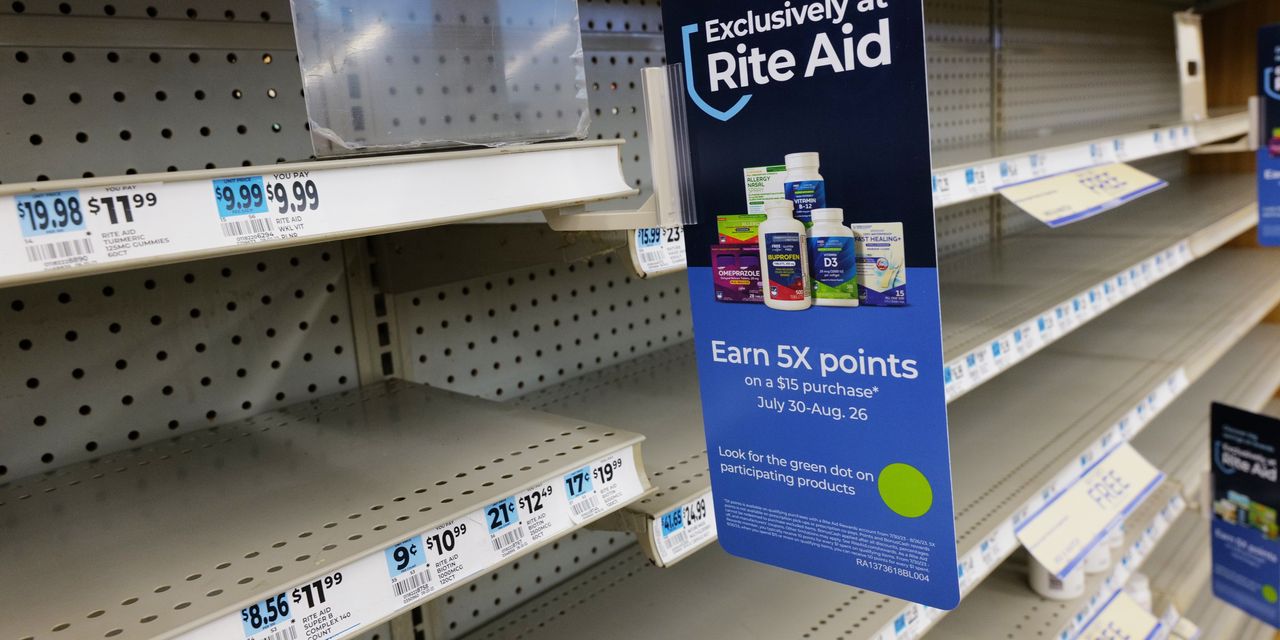Rite Aid Corp.’s stock tumbled 55% Tuesday, falling to 30 cents, after resuming trade following a halt on Monday. The stock was halted after the company filed for bankruptcy amid mounting piles of debt-related to opioid lawsuits.
The company’s bonds were also sold off heavily, as the following charts from data solutions provider BondCliQ Media Solutions show.
The sea of red shows sustained selling throughout the day.
The next chart shows the price movement in the most active bond, the 7.70% unsecured bonds that mature in February of 2027, on Friday and captures Sunday’s announcement.
Those notes were issued as 30-year bonds in December of 1996 with a spread of 100 basis points over the 30-year Treasury note at the time.
Rite Aid
RAD
had been under pressure for months, and the Wall Street Journal reported in August that Rite Aid RAD was more than $3.3 billion in debt, due largely to hundreds of lawsuits related to its distribution of opioid painkillers. The bankruptcy filing stays pending litigation against the company.
The retailer will close more of its network, which currently sits at 2,100 stores. Jeffrey Stein, a restructuring expert, will become chief executive.
Read also: As Rite Aid closes some pharmacies, neighborhoods could lose a ‘pivotal’ piece of America’s health system
Outside of its litigation challenges, the company has also seen several years of net losses, for a total of $2 billion over the last five years. Rite Aid was created in 1962 as a single store in Scranton, Pennsylvania.
The company’s total outstanding debt comes to $4.1 billion. Rite Aid said Sunday that lenders will provide $3.45 billion in financing for the chain to continue operating through the Chapter 11 bankruptcy process.
Read now: The big bet: Can retail pharmacy chains remake themselves into healthcare providers?
Related: Best Buy becomes the latest retailer to enter the healthcare space
Read the full article here







